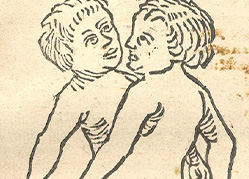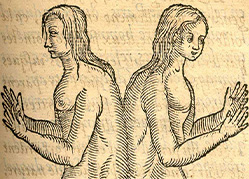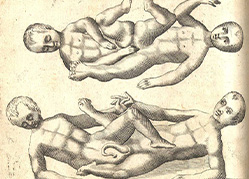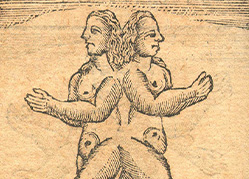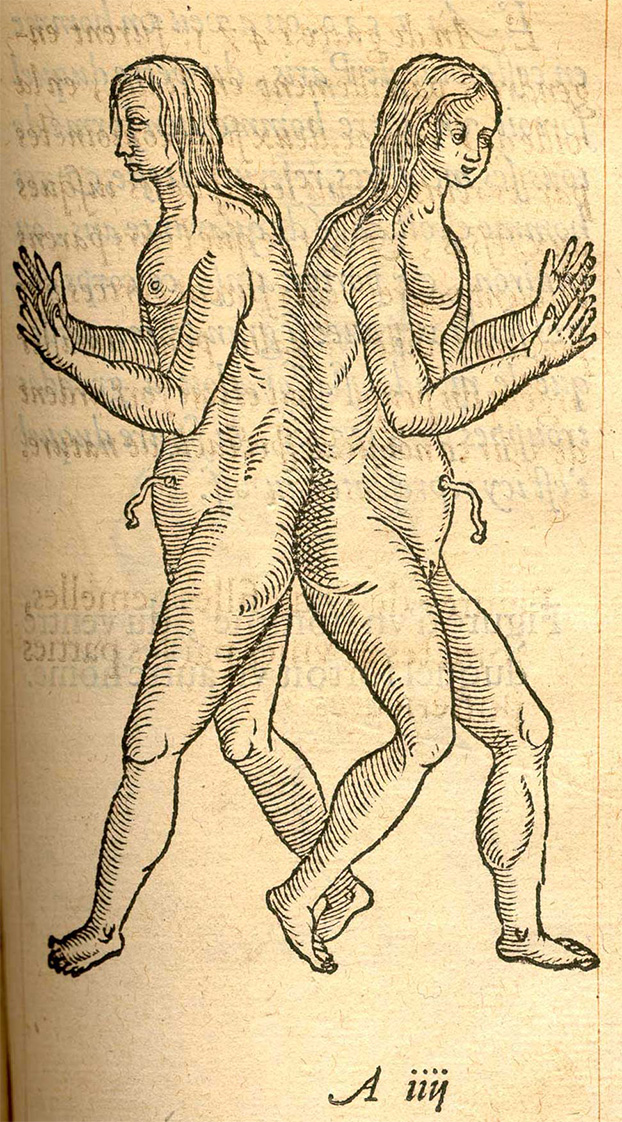A Sixteenth-Century Woodcut
Pygopagus twins from Pare, Ambroise. Deux livres de chirurgie, 1573.
Although there were many 16th-century treatises on monsters, surgeon Ambroise Paré brought a more scientific approach to the genre in his treatise, Des monstres et prodiges. His descriptions of malformed humans and animal-human hybrids avoided fantastical stories in favor of simple, realistic statements. His work became "the" monster book of the Renaissance.
This woodcut illustration depicts two unnamed female pygopagus conjoined twins who lived in Verona, Italy, circa 1475. Paré informs the reader that they were joined at the posterior, from the shoulders to the buttocks and shared their kidneys. Their parents earned money by exhibiting the pair in various Italian cities to people "who were burning to see this new spectacle."
Figures de deux filles gemelles, ioinctes & vnies par les parties posterieures. From: Paré, Ambroise, 1510?-1590. Deux livres de chirurgie. Paris: André Wechel, 1573, p. 375.
Courtesy National Library of Medicine

